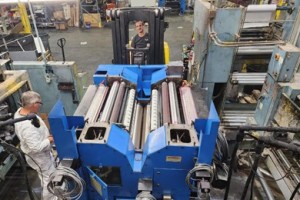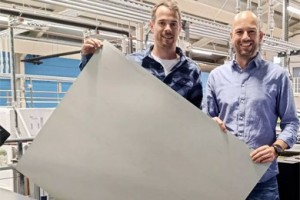How Goss’s press reformatting option could really make the cut
Dec 13, 2009 at 06:27 pm by Staff

Pondering the potential of Goss’s Triliner technology – which enables the cutoff (and broadsheet page height) to be reduced by a third by modifying plate cylinders and installing a new folder based on FPS technology – it struck me the real opportunity may be to combine a shorter cutoff with more page-widths per cylinder (writes Peter Coleman).
Recently US-based director of product development John Richards followed up on an earlier GXpress story about their Triliner system to point out that both even and asymmetric folds are possible with the system (but not both, which he says “basically left no metal to be the cylinder”).
This system retains the ability to structure an edition into multiple folded sections, and actually increases the number produced on collect from two to three (or four to six with an extra former).
While that’s a 50 per cent increase in the number of front pages, my view is that Goss should look at ways of utilising the cylinder width which page width reduction projects squander. The downside is that the resultant page size is pretty much the same as the tabloid of the original press!
Try the math:
A typical 578mm cutoff press would convert with Triliner to a new cutoff of just over 385mm (and perhaps also bring life to equipment with older, less fashionable cut-offs).
If it were possible to reconfigure an original maximum web width of say, 1800 mm to take six page-widths across, the result would be a maximum page width of 300 mm... and the number of pages produced per revolution would have increased by 125 per cent.
Sections:
Newspaper production













Comments